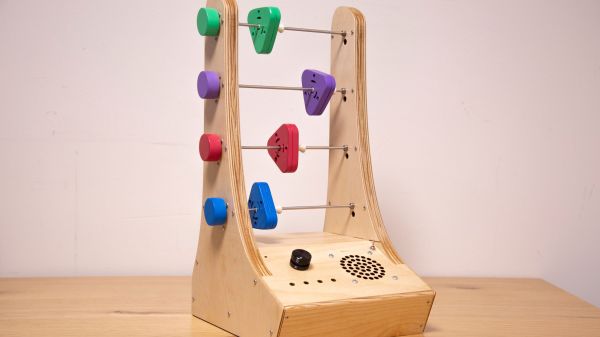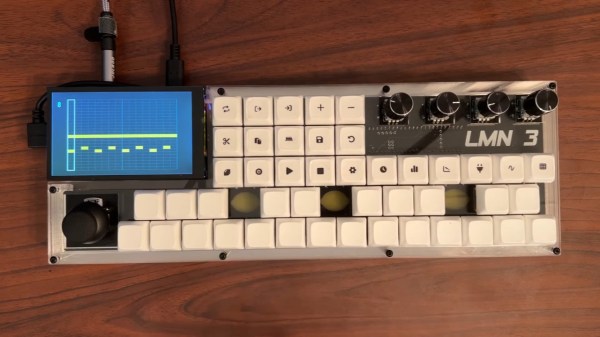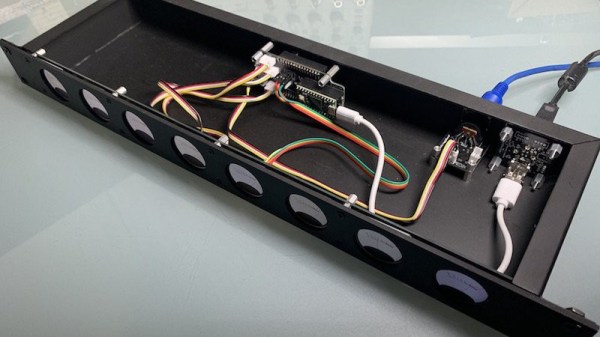The Raspberry Pi Pico is what you might call the board of the moment, thanks to its combination of affordability, features, and continued availability during the component shortage. We have seen plenty of great projects using it, and the latest to float past is [todbot]’s PicoStepSeq, an extremely compact MIDI sequencer.
All the components are mounted on a PCB, with the sequencer’s eight steps selected by a row of buttons with integrated LEDs. The interface is via an SSD1306 OLED, and there is also a rotary encoder. Software comes courtesy of CircuitPython, and the output is delivered via a 3.5 mm TRS jack. Finally the whole is wrapped in a 3D printed enclosure.
The result is a sequencer that could almost be a product in its own right, and we think anyone whose interests lie in electronic music should find straightforward enough to build. All the files and information required to build your own can be found in the linked repository, and he’s placed a Tweet with a video online which we’ve embedded below the break.
Continue reading “PicoStepSeq Is Small But Perfectly Formed”




 the collection of instrument controllers. These controllers are generic enough to take RS485 input and control a dedicated driver for either an array of floppy drives (up to 192), an array of hard drives or the handful of scanners. The way the floppy drives are grouped is quite neat. Rather than using each drive to generate a specific tone, the software uses the whole column for each note. By varying the number of drives moving simultaneously over time, the sound volume varies, simulating the note envelope and giving a richer sound. Multiple columns driving in parallel give the system a 16-note polyphony. The floppies cover the low notes, with the four flatbed scanners covering the higher notes. MIDI drum sounds are mapped to the hard disks, operating in a, well, percussive manner, with different case shapes giving unique sounds. Even the firmware can be updated over MIDI! So, checkout the demo video after the break for a sweet rendition of the very familiar “Entry of the gladiators” by
the collection of instrument controllers. These controllers are generic enough to take RS485 input and control a dedicated driver for either an array of floppy drives (up to 192), an array of hard drives or the handful of scanners. The way the floppy drives are grouped is quite neat. Rather than using each drive to generate a specific tone, the software uses the whole column for each note. By varying the number of drives moving simultaneously over time, the sound volume varies, simulating the note envelope and giving a richer sound. Multiple columns driving in parallel give the system a 16-note polyphony. The floppies cover the low notes, with the four flatbed scanners covering the higher notes. MIDI drum sounds are mapped to the hard disks, operating in a, well, percussive manner, with different case shapes giving unique sounds. Even the firmware can be updated over MIDI! So, checkout the demo video after the break for a sweet rendition of the very familiar “Entry of the gladiators” by 












